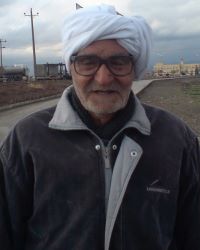Khorasani Turk in Iran

Photo Source:
Anonymous
Creative Commons
|
Send Joshua Project a map of this people group.
|
| People Name: | Khorasani Turk |
| Country: | Iran |
| 10/40 Window: | Yes |
| Population: | 1,002,000 |
| World Population: | 1,002,000 |
| Primary Language: | Khorasani Turkish |
| Primary Religion: | Islam |
| Christian Adherents: | 0.00 % |
| Evangelicals: | 0.00 % |
| Scripture: | Translation Started |
| Ministry Resources: | No |
| Jesus Film: | No |
| Audio Recordings: | Yes |
| People Cluster: | Azeri |
| Affinity Bloc: | Turkic Peoples |
| Progress Level: |
|
Introduction / History
The Khorasani Turks live in the northern part of the Khorasan Province of eastern Iran. Khorasan is the largest province in Iran and is an important agricultural area.
What Are Their Lives Like?
Therefore, most of the Khorasani Turks are farmers. Others are craftsmen of jewelry and glassware while others make carpets and rugs. The family, led by the father, is the major social unit.
What Are Their Beliefs?
Khorasani Turks are Muslim, and their society is organized around traditional Muslim rules.
What Are Their Needs?
Khorasani Turks are a forgotten people, living in a very remote corner of the world. God hasn t forgotten them, but the Church needs to do what it can to make sure these people know that Jesus is Lord.
Prayer Points
Pray that God will cause the revelation of his love and his word to run swiftly across Iran until he is honored and worshiped by the Khorsani Turks.
With modern technology, there are possible inroads through satellite television and radio. Pray for this to happen.
Pray for Christian families to move in among these family-oriented Khorsani Turks who will love them with the Savior's love.
Pray that those families will live the word of God among the people, providing them with a picture of Jesus' identity.